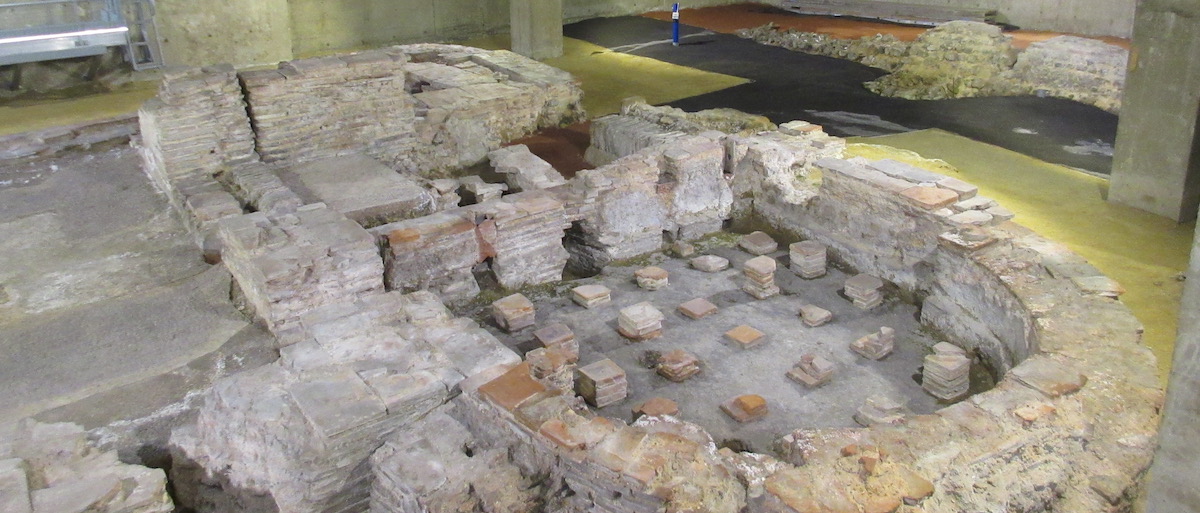
Dig a hole in the City of London and a few metres down you will hit Londinium, the original city, because before the Romans there seems to have been no major settlement.
For nearly 400 years from around 45CE this was a major Roman centre, and although it declined from the late 2nd century onwards (and was destroyed at least twice, the first time in 60CE by Boudicca, and then by a huge fire around 125) it boasted temples, a forum (the biggest north of the Alps), a governor’s palace, nearly 4km of wall, an amphitheatre that could 6,000 spectators and, because the Romans loved bathing, a number of bath houses.
These were more on the line of saunas than pools, the bather progressing from the frigidarium (ambient temperature), to the tepidarium (around 30℃) to the caldarium (the hot room – 40℃ to 50℃). Follow that with a dunk in a plunge pool and afterwards perhaps a massage with oil, or a variety of body treatments (think ‘spa day’). And it was a social activity – friends met, gossip exchanged, business discussed. Bathing was part of what it meant to be Roman, so Londinium would have had numerous public and private bath houses from very soon after its foundation.
Quite a few of these have been found by archeologists over the years (including a large public one on Huggin Hill, under the present Cleary Gardens), but there is only one that is open to the public.
This is over the road from the old Billingsgate market building on Lower Thames Street (a stone’s throw from the Tower). It was first discovered in 1848 during the construction of the New Coal Exchange, but it took until the demolition of that building in the late 1960s for proper archaeological work to be done.
And what a find! It is the only domestic (as distinct from public) structure from Londinium that is still in situ. There is a high status dwelling (probably built in the second half of the 2nd century) that would have fronted onto the Thames. It is thought this had three ‘wings’ (imagine a square ‘U’) and there was another building within the open space between the wings. Some 100 years after the original construction of the dwelling this central building was converted to a bath house (we don’t know what it was before) by adding a tepidarium and caldarium to the end of it. It is not known why this was done – was it the ‘homeowner’ adding a private bath house for his own use, or did the main building become some sort of ‘inn’ which created the bath house to attract guests.
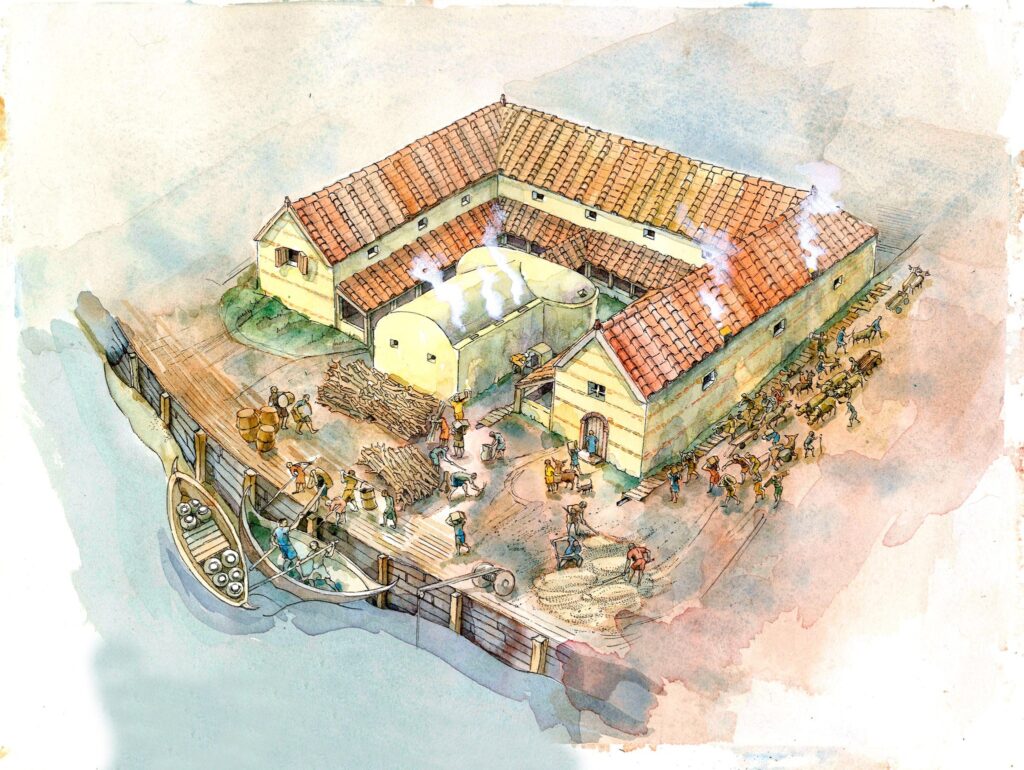
The site is still in the basement of an office block so is only accessible on Saturdays over the summer (April to November). As it is a scheduled ancient monument one moves on walkways over the dwelling and bath house, looking down on the walls of the building, the tesserae on the floor of the frigidarium (imagining Roman Londoners walking barefoot over these little tiles) and the furnaces and hypocausts for both the bath house and the main dwelling.
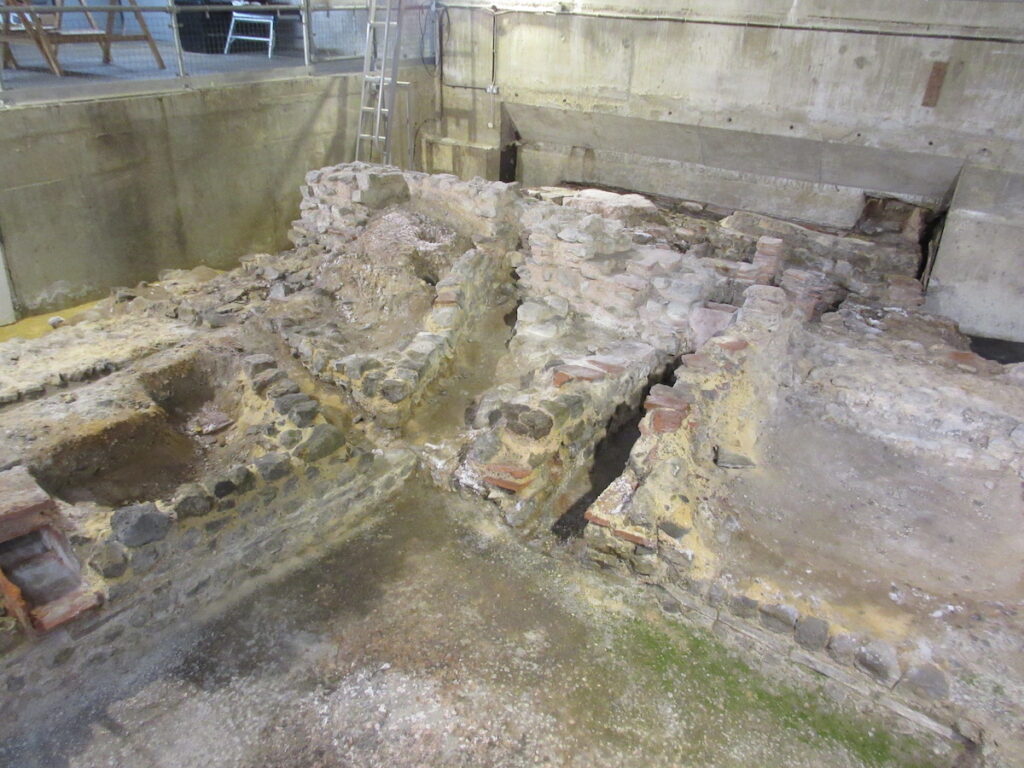
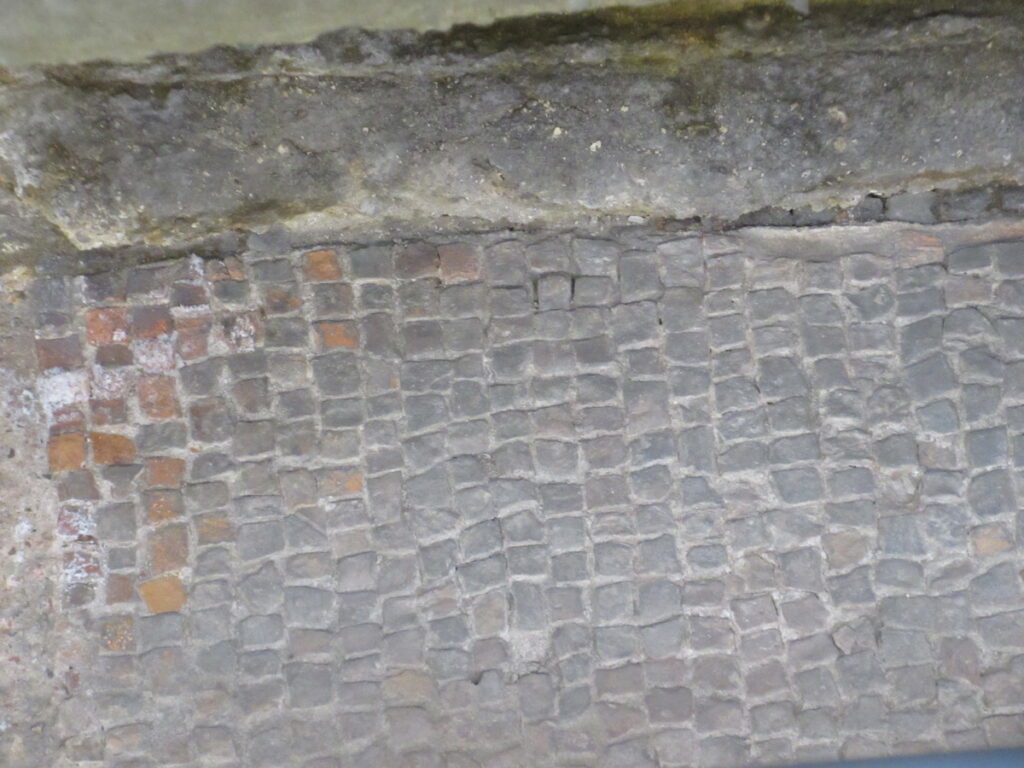
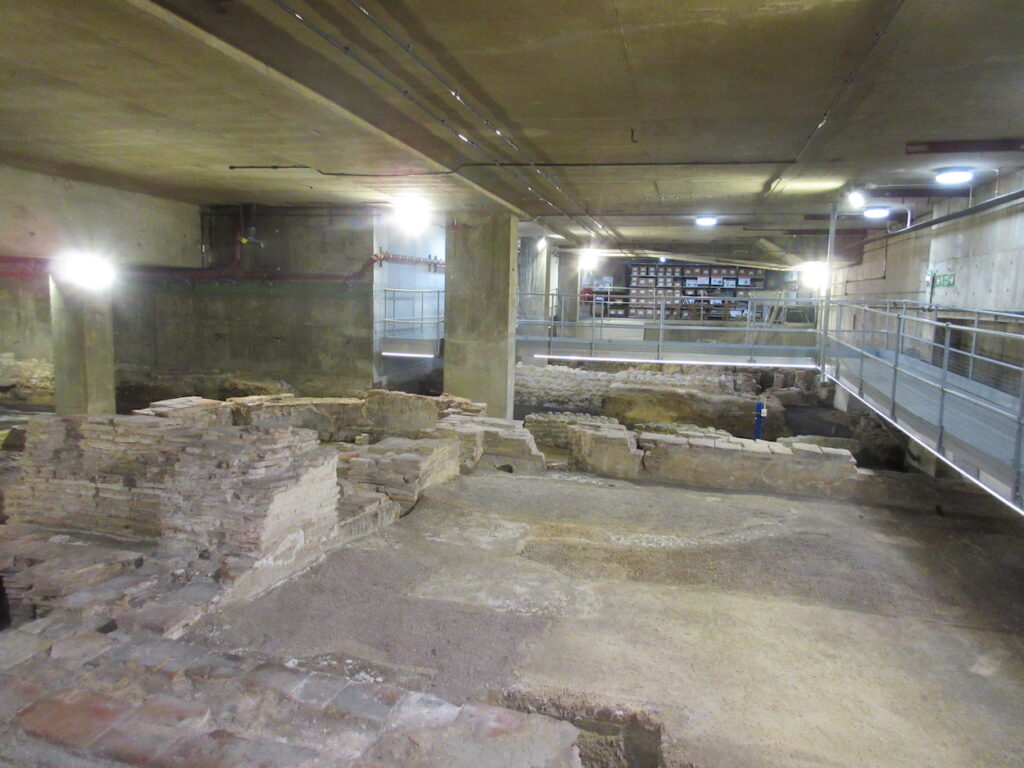
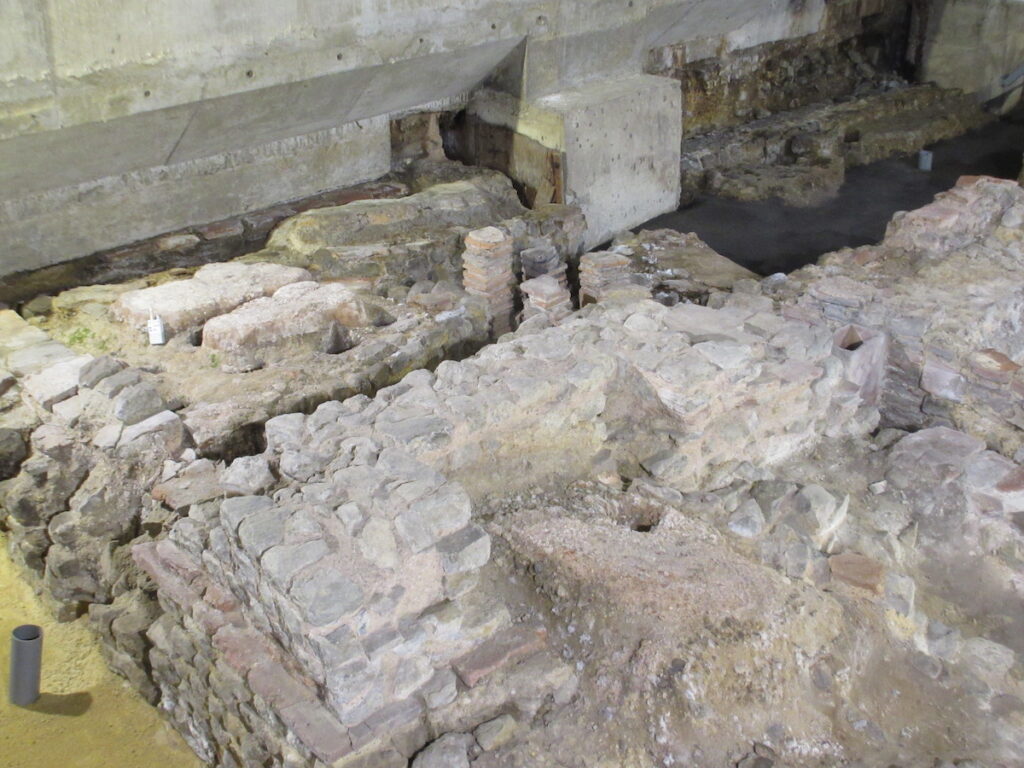
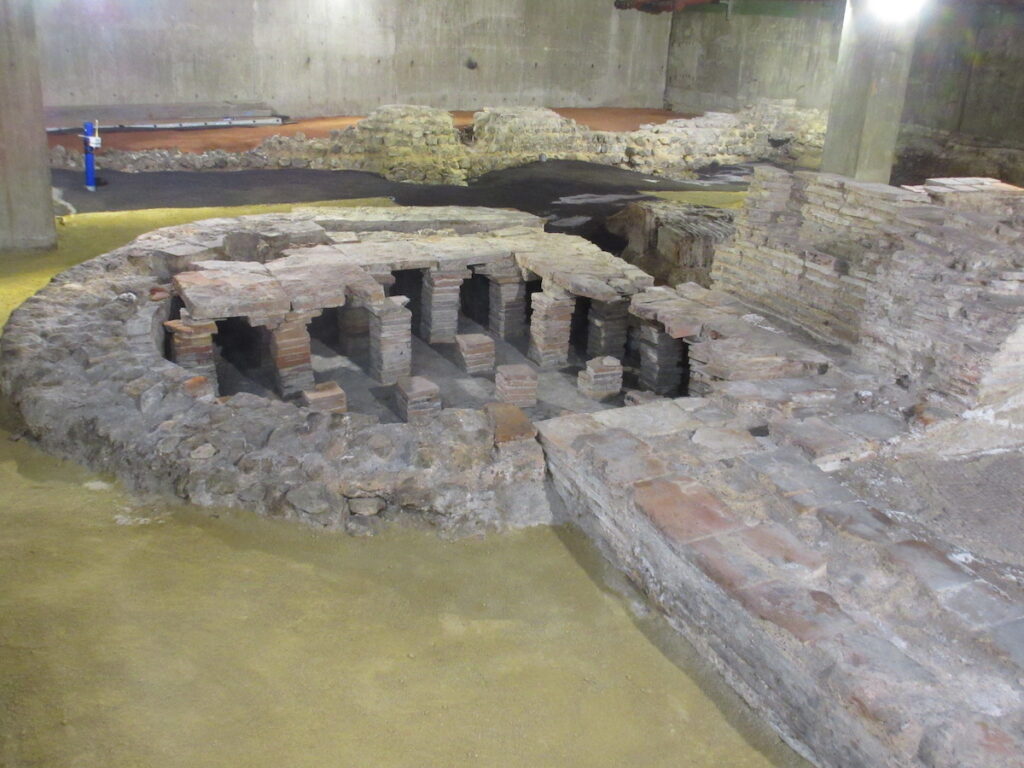
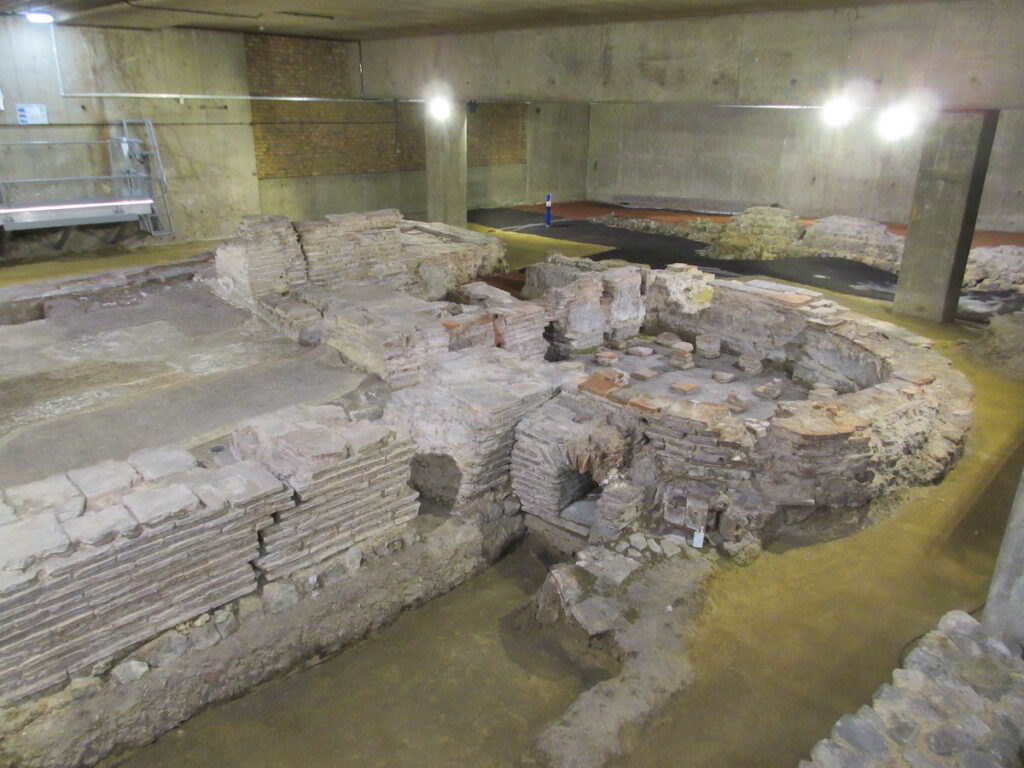
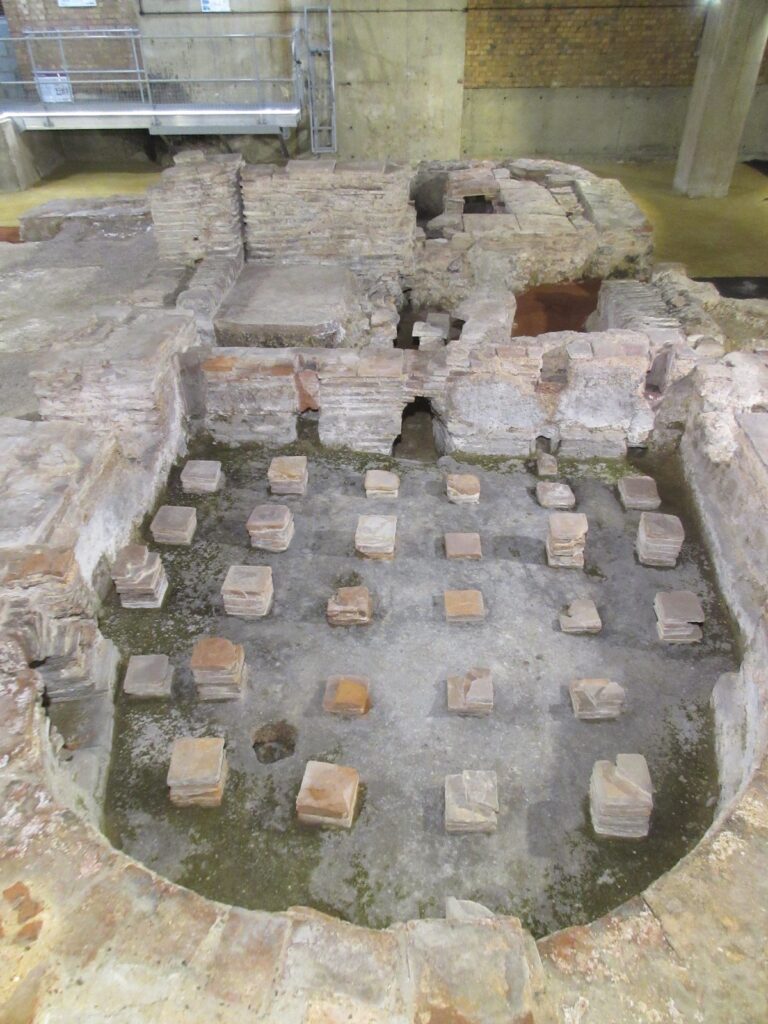
We don’t know how long the bath house remained in use, but coins have been found that date from the last decade of the 4th century, as well as fragments of amphora (which came from the eastern mediterranean) that have been dated to 410-415CE. As the last Roman legions withdrew in 407 (the end of the Roman Empire in Britain is traditionally dated to 410, when the Emperor Honorius responded to a plea for help from his erstwhile colony with “you’re on your own now”) we’re talking about occupancy of the site right at the end of ‘Roman Britain’.
Londinium seems to have been completely abandoned by the middle of the 5th century and the anglo-saxon settlers did not inhabit the area within the walls until the time of Alfred the Great in 886.
The site, expertly introduced and guided by City of London Guides, is a recommended visit for anyone with an interest in Roman Londinium. Details here. There’s a short film about the site (produced for Open House) below.
